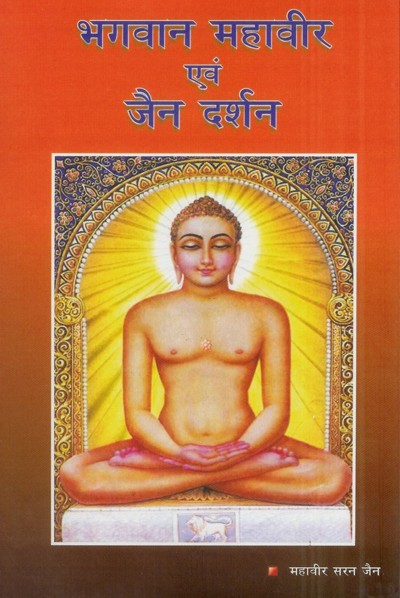1.1.2 Nirijarā (निर्जरा):
तपसा निर्जरा च
tapasā ṇirijarā ca
(As a consequence, Penance results in the falling away of karmic matter from the soul.)
(Tattvārth Sūtra: 9/3)The annihilation of the previously accumulated karma from soul is nirjarā. This annihilation of the karmas or its complete decadence is the nirjarā. The aperture in the boat is plugged so that water coming from outside be stopped. Some previously entered water gets dried automatically and remaining water is scooped out of the boat, the boat is made clean. If the water of the boat is not scooped away and the boat is not made dried and the aperture is not plugged the pouring of water in the boat can take place again.
The previously accumulated karma is weakened under the influence of penance. Dissociation, penance, annihilation of karmas all are the synonymous.
तवसा उ निज्झरा इह, निज्जरणं खवण नासमेगट्ठा।
सम्मा भावापायणमिह, निज्जरमो जिणा विंति।।
Tavasā u nijjarā iha, nijjaraṇaṁ khavaṇa nāsamegatthā.
kammā bhāvāpāyaṇamih, nijjaramo jiṇā viṅti...
(Ācārya Haribhadra Sūri: Sāvay Paṇṇatti, 82)A shramaṇa (श्रमण) or monk closes the passages of passion (attachment and aversion) and annihilates the karmas accumulated during millions of births. As a large tank, when its supply of water has been stopped, gradually dries up by consumption of the water and by evaporation, so the Karman of a monk, which he acquired in millions of birth, is annihilated by austerities, if there is no influx of bad Karman.
जहा महातलायस्स, सन्निरुद्धे जलागमे।
उस्सिंचणाए तवणाए, कमेण सोसणा भवे।।
एवं तु संजयस्सावि, पाव कम्म निरासवे।
भव कोडी संचियं कम्मं, तवसा णिज्जरिज्जई।।
jahā mahātalāyassa, sanniruddhe jalāgame.
ussisaṁchaṇae tavaṇae, kameṇa sosaṇa bhave...
Evaṁ tu saṁjayassāvi, pāva kamma nirāsave.
Bhava kodi saṁchiyaṁ kammaṁ, tavasā ṇijjrijjaī...
(The Uttarādhyayana Sūtra, 30/6)“Tapa” or Austerities are of two kinds: external and internal; external austerities are of six kinds and internal austerities are of six kinds. The body is prepared to bear suffering (parīṣaḥ) and to practice renunciation of pleasure through the external tapa. The soul starts glittering through the internal tapa. The meaning of tapa in reference to nirjarā is internal tapa. The importance of tapa is stated in all spiritual philosophies. There are differences in terminology to denote the process of austerities. In yoga traditions tapa is known as a part of kriyā-yoga. The sense in which the tapa is accepted in Jain philosophy that situation in yoga philosophy is the attainment of samādhi, the parisaṁkhyāna, and the flaming the fire of knowledge. The gross mental impressions are destroyed through kriyā-yoga. The tapa turns into subtle form. After attaining the samādhi the kleśa (sorrows) get destroyed and turn as burnt seeds in the fire of meditation. In Jain philosophy the attachment and aversion get wiped in the stage of saṁvara and the soul becomes devoid of passions. In the stage of subsidence nirjarā, the deluding karmas get calm and quiet. In the stage of complete annihilation all seeds of karmas are burnt into ashes. This is the statement of Jain scriptures
नाणमयवायसहिओ, सीलुज्जलिओ तवो मओ अग्गो।
संसारकरणबीयं, दहइ दवग्गो व तणरासिं।।
Nāṇamayavāyasahiyo, sīlujjaliyo tavo mao aggī.
saṁsārakaraṇabīyaṁ, dahai davaggī va taṇarāsiṁ..
(The fire of tapa with the help of air of knowledge and flame of conduct burns all seeds of accumulated karmas as the fire burns the heap of straw with help of powerful wind).
(Maraṇa Samādhi (Prakīrṇaka), 134)
In Gita three types of virtues are described:(1) Austerity of body (शरीर तप),
(2) Austerity of speech (वाङ्मय तप)
and
(3) Austerity of mind (मानस तप)(1) Austerity of body (शरीर तप):............................, शौचमार्जवम्।
(2) Austerity of speech (वाङ्मय तप):
ब्रह्मचर्यं अहिंसा, च शारीरं तप उच्यते।।
............................ , śaucam ārjavam.
Brahmacaryaṁ ahiṁsā ca śārīraṁ tapa ucyate..
(Internal & external cleanliness, simplicity or no duplicity, celibacy and non-violence to any living being is declared austerity of body)
(Gita, 17/14)अनुद्वेगकरं वाक्यं सत्यं प्रियहितं च यत्।
स्वाध्यायाभ्यासनं चैव वाङ्मय तप उच्यते।।
Anudvega-karaṁ vākyaṁ satyaṁ priya-hitaṁ ca yet.
Svādhyāyābhyasanaṁ caiva vān´mayaṁ tapa ucyate...
(Truthful speech, yet do not offend to others, and which is imbued with pleasing and beneficial as well as regular recitation of the scriptures is declared austerities of speech.)
(Gita, 17/15)
(3) Austerity of mind (मानस तप)मनः प्रसादः सौम्यत्वं मौनमात्मविनिग्रहः।
भावसंशुद्धिरित्यतत् तपो मानसमुच्यते ।।
Manaḥ-prasādaḥ saumyatvaṁ maunam ātma-vinigrahaḥ
Bhāva-saṁśuddhir ity etat tapo mānasam ucyate...
(Serenity of thought, compassion, silence derived by constant meditation within, tranquility derived from the self-control of withdrawing the mind from the senses, purity of heart derived from the absence of any deceitfulness in thought, words and conduct, all these are declared austerity of mind.)
(Gita, 17/16)In different traditions of yoga-tantra, (viz., kāyā-yoga, haṭha-yoga, nātha-yoga, laya-yoga, mantra-yoga, prāṇa-yoga, kundalinī-yoga, nāḍī-yoga, caṅdra-sūrya-yoga, praṇava-yoga, rāja-yoga, ātma-yoga and jñāna-yoga etc.), different methods of awakening of pure conciseness, the limited intake of food to purify body, and the method to practice the exhale (pavana-yoga) and the process of rhythmic breathing (prāṇāyāma) through inhale (pūraka) accumulation of wind in stomach(kuṁbhaka)and exhale(recaka) have also been thoroughly described. The provision of ajapājāpa and mantra-yoga is described in śabda-yoga. In dhyāna-yoga, through the recitation of bīja-mantra, the awakening of the yoga-māyā, reaching to gagana-mandal through the path of suṣumnā after taking bath in the confluence of triputī, the controlling over kundalinī, arising of the temperature in the body through kundalinī and squeezing of the nectar all these karmas are described in detail.
The seer Patanjali, in his yoga-Sūtra has stated the eight types of yoga viz., (1) Yama, (2) niyama, (3) āsana, (4) prāṇāyāma, (5) pratyāhāra, (6) dhāraṇā, (7) dhyāna (8) samādhi. Tapa is considered under niyama such as—śauca-santoṣa-tapaḥ-svādhyāya-īśvarapraṇidhānāni niyamāḥ’. The way in which, we are discussing ‘tapa’ comprises all these āsana, prāṇāyāma, pratyāhāra, dhāraṇā and dhyāna. As per rule of yoga-sādhanā the āsana is the regular and prescribed method to practice for physical fitness. Prāṇāyāma means to control over mind through exhale and inhale. The detachment of the sense organs from their subject is pratyāhāra. Several method of pratyāhāra are prescribed such as—(1) the practice of viparītakāraṇī-mudra (2) the practice of mūrchhā-prāṇāyāma (3) The recitation of 1, 20,000 ‘Om’ with peaceful mind (4) the constant focus of vision on point of nose, without blinking of eyes, over point of nose (5) To stop the speed of exhale and inhale through the kuṁbhaka sitting in prāṇāyāma posture.
The one meditates controlling all his tendencies of citta over any object through the ‘dhāraṇā’. The practice of dhāraṇā is done in different postures. Concentration of mind in a particular subject is ‘dhyāna’.
It has been said that “Tapa” or Austerities are of two kinds: external and internal; external austerities are of six kinds and internal austerities are also of six kinds.
 Dr. Mahavir Saran Jain
Dr. Mahavir Saran Jain
